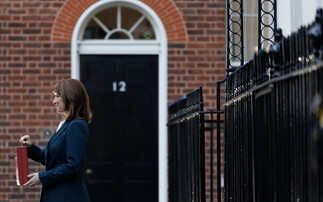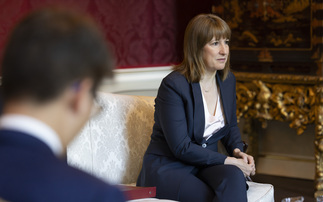
Clare Moffat, Head of Technical at Royal London
In the recent Autumn Statement, the chancellor Jeremy Hunt announced that the annual tax-free allowance (the annual exempt amount) for capital gains tax (CGT) would be cut from £12,300 to £6,000 in 2023/24, before being cut again to £3,000 the following tax year. This is projected to generate £1.2 billion per year for HM Treasury. So, what does it mean for clients? Is it worth taking advantage of the higher allowance before it reduces?
How CGT works
As a reminder, CGT is charged on the profits you realise when selling or disposing of shares, funds, business assets, personal possessions worth more than £6,000 or property that's not your main home which have increased in value. It's the gain that is taxed and not the amount of money received. Taxable gains are charged at 18% and 28% for residential property and 10% or 20% for other assets, depending on your income band. If someone has capital gains that exceed their annual exempt amount then these sit on top of the individual's taxable income to work out what rate of tax is due.
It's also important to note that disposing of an asset includes giving it away as a gift or transferring it to someone else unless that person is your spouse or civil partner or a charity. When you inherit an asset, inheritance tax is usually paid by the estate of the person who's died. However, if you later dispose of the asset inherited, you would need to work out if CGT is due.
Here's a simple example of CGT. I purchased a painting at £5,000 then sold it later for £25,000. The gain is £25,000 - £5,000 = £20,000. But I would also get to deduct the annual exempt amount of £12,300 which would leave £7,700 to be taxed at 10% or 20%. However, after April - it will be £14,000 of a gain to be taxed at 10% or 20% instead. So for this example, the decrease in the annual exempt amount would be an extra £630 or £1,260 - depending if tax was paid at 10% or 20%. If you're thinking of selling or disposing of an asset, then it's definitely worth thinking about that now rather than after April.
Pensions and CGT
Selling assets now and paying into a pension starts to look even more attractive. But pensions can also help lower the rate of CGT payable as well. For example, let's look at a situation where Meera inherited a vase a few years ago but is now disposing of it. After her annual exempt amount has been deducted, there is a gain of £10,000. But Meera earns £50,270 and the gain pushes her into being a higher rate taxpayer and that means she has to pay 20% CGT. If she was a basic rate taxpayer it would be 10%. So she has income tax of £7,540 plus CGT of £2,000. Total tax bill of £9,540.
But if she pays a pension contribution then she can save tax and help satisfy her retirement income needs. She writes a cheque for £8,000 using some of her gain. It's then grossed up to £10,000 and increases her basic rate band by £10,000 which means that her total tax bill will reduce from £9,540 to £8,540. Her CGT bill will reduce from £2,000 to £1,000 as she's no longer a higher rate taxpayer for CGT. She'll also receive tax relief of £2,000. Spend of £7,000 to have a pension of £10,000 so total tax relief of 30%. If Meera was 55 or over, then she could take 25% TFC immediately.
Time is of the essence
Using the proceeds of a sale and paying it into to a pension has always been a good idea but will save even more tax now. The usual rules about paying into pensions will apply. Firstly, if it's an individual contribution, are there relevant earnings to support it and secondly, do they have enough annual allowance to make a contribution without a tax charge applying? With careful planning, clients can reduce their tax exposure by using the higher CGT allowances still available before they shrink even further. This needs to be considered at the beginning of 2023 before the CGT allowance reduces by more than half.
For more technical content and tax year end support, visit Royal London's adviser website.











